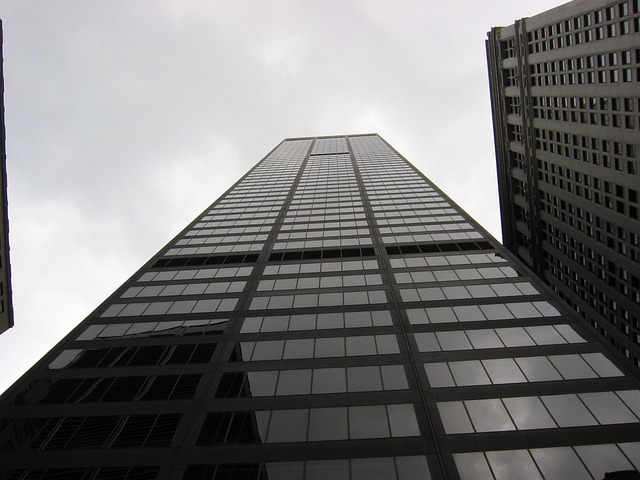Glue Laminated Beams (GLBs) offer superior strength, stability, and durability compared to Engineered Wood Beams (EWBs), enabling longer spans and reduced support needs. GLBs have excellent load-bearing capacity, resistance to warping/splitting, and cost-effectiveness. They are ideal for complex architectural designs and promote sustainability through responsible forest management. While EWBs are more affordable, GLBs provide long-term benefits justifying their higher cost. Both offer similar installation techniques suitable for residential and commercial projects.
Looking to save on building materials without compromising quality? Explore the world of glue laminated beams, a sturdy and cost-effective alternative to traditional construction methods. This comprehensive guide delves into the intricacies of glue laminated beams, comparing them with engineered wood beams in terms of features, pricing, durability, environmental impact, and practical applications. Discover why these innovative products are revolutionizing the industry and how you can leverage their benefits for your next project, ensuring both strength and savings.
- Understanding Glue Laminated Beams: A Comprehensive Overview
- Engineered Wood Beams: Key Features and Advantages Compared
- Cost Analysis: Direct Comparison of Material Prices
- Durability and Strength: Testing the Beam's Performance
- Environmental Impact: Sustainability Considerations for Each Option
- Application and Installation: Practical Use Cases Revealed
Understanding Glue Laminated Beams: A Comprehensive Overview

Glue Laminated Beams, often referred to as Engineered Wood Beams, are a modern alternative to traditional lumber choices in construction. They are created by bonding multiple layers of wood veneers together with strong adhesives, forming a single beam that exhibits superior strength and stability compared to solid wooden joists. This structural comparison highlights the advantages of Glue Laminated Beams over Engineered Wood: they offer enhanced structural integrity, allowing for longer spans and reduced support requirements.
The benefits of this construction technique are numerous. First, it provides excellent load-bearing capacity, making it ideal for heavy structural applications. Moreover, glued laminated timber is known for its durability and resistance to warping or splitting, ensuring longevity in building projects. In terms of cost-benefit analysis, Glue Laminated Beams can be a more economical option due to their efficient use of material and reduced waste. For complex architectural designs, Engineered Wood Beams offer versatility and the ability to span greater distances, accommodating modern construction demands. To learn more about these innovative beam solutions and how they can benefit your project, give us a call at (607) 369-9341.
Engineered Wood Beams: Key Features and Advantages Compared

Engineered Wood Beams: Unlocking Advanced Structural Solutions
In the realm of building construction, Glue Laminated Beams vs. Engineered Wood: which one comes out on top? Engineered wood beams, also known as glulam or glued laminated timbers, represent a modern marvel in structural engineering. Unlike traditional wooden joists, these innovative products are crafted through a meticulous process that involves gluing together multiple layers of lumber, creating a single, incredibly strong and stable beam. This structural comparison reveals several key advantages: enhanced strength, superior durability, and versatile design options.
Engineered wood beams offer significant benefits over traditional lumber choices in terms of both strength and durability. Their composite structure allows them to withstand heavy loads, making them ideal for spanning wide distances without support. The glues used in laminating timber ensure structural integrity, enabling these beams to maintain their strength even under extreme conditions. This makes engineered wood a prime candidate for complex architectural designs where structural efficiency and longevity are paramount. Moreover, with the evolution of glue technology, modern glues surpass traditional joinery methods, offering enhanced bond strength and weather resistance. For those seeking a sustainable building solution, engineered wood beams are an eco-friendly choice, as they can be sourced from responsibly managed forests. Give us a call at (607) 369-9341 to learn more about how these advanced structural components can elevate your next project.
Cost Analysis: Direct Comparison of Material Prices

When comparing glue laminated beams vs. engineered wood beams, cost analysis plays a crucial role in deciding which material to choose for your construction project. In terms of direct price comparison, engineered wood beams have historically been more affordable than glue laminated beams due to their production methods and material composition. Engineered wood, as the name suggests, involves enhancing natural wood with various gluing and pressing techniques to create composite structures. This process allows for cost-effective solutions without compromising on structural integrity.
On the other hand, glue laminated beams are created by laminating multiple layers of wood veneers with high-strength glue, resulting in a strong and durable timber. While this advanced lamination technique enhances beam performance, it can drive up production costs, making glue laminated beams generally more expensive than their engineered wood counterparts. However, when considering the long-term benefits, such as increased structural capacity and longevity, the initial cost difference may become less significant. For a comprehensive analysis, visit us at unalam.com anytime to explore the latest advancements in timber lamination for structural applications.
Durability and Strength: Testing the Beam's Performance

When comparing glue laminated beams to engineered wood beams, durability and strength are paramount. Engineered wood beams, known for their exceptional structural integrity, have revolutionized construction due to advancements in glue laminating techniques. This method involves bonding multiple layers of wooden strips together with high-performance glues, creating a beam with superior strength and dimensional stability compared to traditional lumber choices.
In terms of structural comparison, glue laminated beams consistently outperform wooden joists. Their longevity and load-bearing capacity are well-documented, making them ideal for both residential and commercial projects. Visiting us at 18 Clifton St, Unadilla, NY 13849 anytime allows you to explore these innovations firsthand, gaining insights into the science behind glued structural components and why engineered wood is fast becoming a preferred building material in modern construction.
Environmental Impact: Sustainability Considerations for Each Option

When considering building materials, especially for structural elements like beams, it’s crucial to weigh environmental impact and sustainability alongside strength and cost. Glue laminated beams and engineered wood beams each present unique advantages and considerations. In terms of glue laminated beams vs. engineered wood: structural comparisons reveal that both offer exceptional strength and durability but differ in manufacturing processes and material composition.
What are engineered wood beams? and how do they benefit builders? These beams are created through advanced engineering techniques, often involving pressure-treating and gluing wood fibers to create a strong, uniform structure. This process enhances the natural strength of wood while mitigating some of its traditional limitations. In contrast, glue laminated beams involve laminating multiple thin layers of wood with powerful adhesives, resulting in high structural integrity. When assessing glue laminated beams vs engineered wood: cost-benefit analyses show that both can be competitive, depending on project scale and specific material requirements. Choosing between them ultimately hinges on factors like budget, desired aesthetic, structural demands, and environmental considerations. For a detailed understanding of each option’s strengths and weaknesses, consider giving us a call at (607) 369-9341.
Application and Installation: Practical Use Cases Revealed

Application and Installation: Unveiling the Practical Potential of Glue Laminated Beams
Glue laminated beams, often referred to as GLB, have emerged as a powerful alternative to traditional engineered wood beams (EWB) in construction. The structural comparison between these two reveals distinct advantages. Unlike EWB, which are made by gluing and pressing layers of wood together, GLBs involve the lamination of multiple pieces of timber with high-performance glues, creating a single, incredibly strong beam. This process enhances the strength and durability of glued laminated timber, making it a preferred choice for heavy-load bearing applications.
When it comes to installation, GLBs offer several practical use cases. They can be used in both residential and commercial projects, from building bridges and structures in remote areas to modern construction techniques. The step-by-step guide for installing EWBs applies to GLBs as well, ensuring precision and stability. Moreover, the versatility of engineered wood allows for complex architectural designs, while also being a sustainable solution due to responsible forest management practices. For those seeking a cost-effective yet robust option, exploring the advantages of glue lamination over traditional joinery techniques might prove enlightening. To learn more about these innovations, visit unalam.com and discover how GLBs contribute to stronger, greener buildings.
In comparing glue laminated beams and engineered wood beams, it’s evident that both offer compelling advantages in terms of cost, durability, and environmental sustainability. While glue laminated beams excel in structural integrity and versatility, engineered wood beams provide an eco-friendly alternative with unique design flexibility. For many construction projects, a combination of these technologies could prove to be the optimal solution, balancing strength, budget, and ecological responsibility. When considering Glue Laminated Beam vs. Engineered Wood Beam, understanding their distinct characteristics allows builders and designers to make informed choices tailored to specific project needs.














